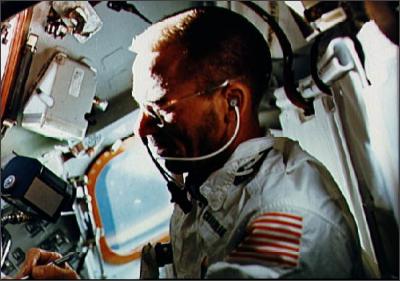 In January, the HI-SEAS crew had a test-run of sorts. We took part in a two-week simulated Mars mission at the Mars Desert Research Station (MDRS), just outside Hanksville, Utah. The purpose was to test protocols for our main food study as well as for our own HI-SEAS projects.
In January, the HI-SEAS crew had a test-run of sorts. We took part in a two-week simulated Mars mission at the Mars Desert Research Station (MDRS), just outside Hanksville, Utah. The purpose was to test protocols for our main food study as well as for our own HI-SEAS projects.
I have two primary project goals while at HI-SEAS. The first is to conduct a rigorous sleep study. I’m collecting data to determine if and how bright morning light mght affects crew sleep quality. While at MDRS, I tested protocols for this study and now have a fairly good idea of the ultimate experimental design I’ll use during the four-month mission.
The second goal is to write about the experience of being on a simulated Mars mission in a non-boring way. As a journalist, I’m still getting comfortable with the idea of inserting myself into the story. But with this HI-SEAS project, that’s the point. Or at least part of the point. So I’m still calibrating my writing approach with the expectation that it will evolve as the mission progresses.
During the January mission, I tried out a few different styles, lengths, tones, etc. I shied away from journalistic objectivity, and tried to avoid an expressly personal, bloggy tone. I attempted to write from varying perspectives about a host of topics that resonated in me during those two weeks. Some of the posts work better than other, but they all have elements that I plan to make use of during HI-SEAS.
In case you missed them the first time around, here are my posts from MDRS:
1. This post was written on our first day in simulation at the Mars Desert Research Station. Our two-week mission at MDRS in January 2013 served as preparation for the four-month HI-SEAS mission in April. Mars Desert Research Station, Day 1.
2. Early in the mission, before the simulation began, the crew sat down to work on a comprensive schedule for every task needed to be done while at MDRS. Scheduled Calm.
3. This post describes the first EVA (extra-vehicular activity), in which three crew members explored the area surrounding the habitat while wearing simulated spacesuits. Inside, Outside.
4. General observations at MDRS. Now, Press “Record”.
